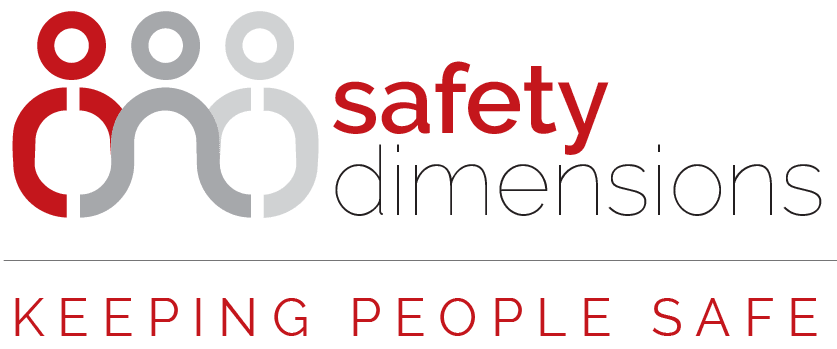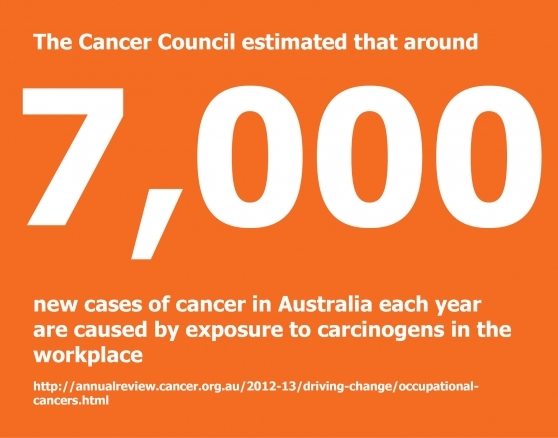
If your job requires you to work outside, the recent bushfires and dust storms may put your and your staff at risk of exposure to air pollution. As an employer you need to be aware of your legal obligations.
Under the Work Health Safety Act 2011, employers have a duty to, so far as is reasonably practicable, ensure health and safety by eliminating or minimising risks – this is not only for their employees but also for subcontractors.
Smoke from bushfires is made up of very small particles and gases. These particles in the air can irritate your eyes, nose and throat, causing itchy/burning eyes, runny nose, headaches, irritate the throat or sinuses and cause shortness of breath. The particles are so small they can also penetrate deep into the lungs. In healthy people these symptoms may be temporary, however those with a lung or heart condition may experience a worsening of their condition, leading to a more severe response such as an asthma attack or heart attack.
So how do you keep people safe and meet your obligations?
First you should check your local air quality index to determine the level of air quality and risk where you are working.
You can check your states environment protection authority website for the most up to date readings:
According to Safe Work Australia, dust and smoke may:
- reduce air quality and impact visibility
- settle onto equipment and impact the functioning of plant and grip of surfaces
- irritate the airway, nose and eyes.
You must talk to your workers and their elected Health and Safety Representatives (HSRs) and take their views into account when deciding on control measures to eliminate or minimise WHS risks at your workplace, including measures to eliminate or minimise risks from air pollution.
Your workplace must have measures in place to manage the risks to health and safety caused by working outdoors when air quality is reduced, including:
- working indoors (where possible)
- rescheduling outdoor work until conditions (e.g., visibility and air quality) improve
- ensuring plant is functioning correctly and has not been affected by dust or debris
- cleaning any dust and debris off outdoor surfaces
- providing personal protective equipment such as eye protection and correctly fitted P2 rated face masks.
Safe Work Australia has published guidance on ‘Managing the risks from air pollution: Advice for PCBUs’:
https://www.safeworkaustralia.gov.au/doc/managing-risks-air-pollution-advice-pcbus
References:
Safe Work Australia https://www.safeworkaustralia.gov.au
Health NSW https://www.health.nsw.gov.au/environment/air/Pages/bushfire-illness.aspx
Ready to train your people in safety, risk management, hazard identification or subcontractor management?
We have a range of programs to train your people in risk management, hazard identification and subcontractor management which can be tailored specifically to your industry and organisational needs. Training can be delivered as individual modules or as part of one of our accredited programs.
BSB41419 Certificate IV in Work Health & Safety
The BSB41419 Certificate IV in Work Health and Safety is a nationally accredited program that will teach you how to identify hazards in the workplace, assist with responding to incidents, assess and control risk and consult on work health and safety issues. This program is most suited to those in a Safety Officer or Health and Safety Representatives role, or those currently in leadership roles wishing to shift their career into Health and Safety.
Risk Assessment & Hazard Identification
This program helps you identify and describe the difference between a hazard and a risk, and introduces a way of thinking about hazard identification and risk management as an everyday activity.
It will also enhance the skills and capabilities of leaders in the areas of hazard identification, risk analysis and identification and how to implement appropriate risk controls.
Contact us for a course outline >>
Subcontractor Management
Learn to effectively manage WHS site risks and performance by learning how to effectively select, manage and monitor the complex and difficult world of subcontractors. It also covers the WHS obligations regarding subcontractors, stepping through the various stages of effective subcontractor management, including assessing, evaluating safety history, attitude and managing expectations of performance and reporting.
Want to find out more about how we can customise our programs to your industry and organisation?
Let's talk!
Call us on 03 9510 0477, email [email protected] or use our contact form here.
From our blog
Are we legislating for accidents?
Are we legislating and managing for accidents? Observations of a safety professional. Dr Paul Johnston - Lead Consultant & Facilitator Safety Dimensions. WHS legislation and management frameworks are intended to jointly define a systematic means by which we keep...
The Alarming Cost Of Stress
Safe Work Australia reports that the costs of mental stress-related claims in Australia is more than $10 billion per year. And it is estimated that the effects of stress on those who are at work but not performing to their potential costs Australian businesses a...
Half empty or half full?
A psychologist walked around a room while teaching stress management to an audience. As she raised a glass of water, everyone expected they'd be asked the half empty or half full question. Instead, with a smile on her face, she inquired: How heavy is this glass of...
Dealing With Stress Programs
Dealing With Stress Programs Stress comes in many forms, sometimes positive and useful for peak performance and sometimes counterproductive when built up over a period of time. Stress shows up as higher absenteeism, higher workcover claims, poor performance, bullying...
Cancers from workplace exposure
The Cancer Council estimated that around 7,000 new cases of cancer in Australia each year are caused by exposure to carcinogens in the workplace. The report estimates that as many as 1.5 million Australian workers, engaged in 51 different industries, may be exposed to...
Staying Cool Under Extreme Heat
As summer temperatures soar around the country, Worksafe Victoria shares some advice about how to prevent heat illness from working outdoors in hot weather or where heat is generated as part of work. With temperatures predicted to reach above 40 degrees Celsius across...






